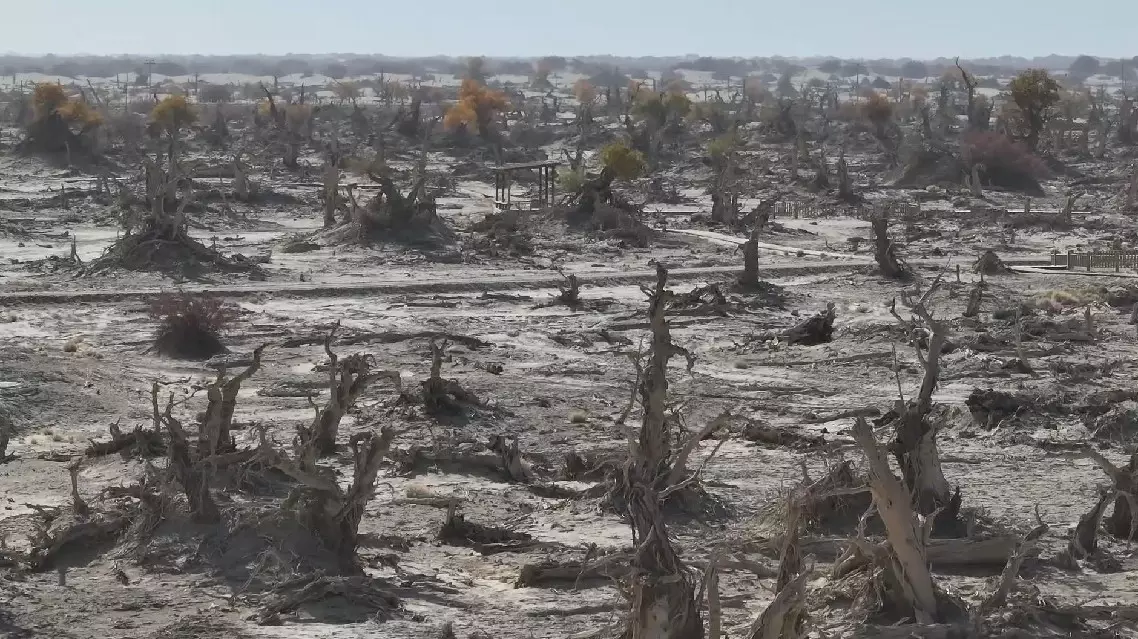Spanish fashion giant Inditex has reaffirmed its long-term commitment to the Chinese market while participating in the ongoing 7th China International Import Expo (CIIE) in Shanghai.
Inditex is the world's largest fast fashion group that owns Zara, Bershka, Massimo Dutti, Stradivarius and other popular brands. It is the fifth time for the Spanish group to attend the CIIE, which runs from November 5 to 10.
Earlier this year, Zara launched a new pop-up store on Anfu Road, a popular shopping destination in Shanghai. The store regularly releases its co-branded series and sells selected series and products customized for the Chinese market, which have been well received by the consumers.
"It is a completely different concept from other stores that we have in China. We have also upgraded our livestreaming, which we are very happy about. We have also exported that livestreaming to other markets outside of China," said Eugenio Bregolat Lukashov, president of Inditex Greater China.
Lukashov has been in China since 1987. He said the country has become his second hometown.
"I have seen the country evolve and change. What has not changed is really the warmth and the love shown by the Chinese citizens, by the Chinese people. This is a country, of course, with a lot of history, a very deep-rooted culture. And I have to say that both myself and my family are very happy to continue to be in China," he said.
According to Lukashov, a new flagship store will open next year in Nanjing City of east China's Jiangsu Province, a move that indicates the fashion giant's long-term commitment to the dynamic Chinese market.
"It's a market that we continue to invest in. CIIE and the Chinese market, I would say, is very vibrant. It's constantly changing. It is very demanding and most importantly, is extremely exciting," Lukashov said.
Themed "New Era, Shared Future", the 7th CIIE has the participation of 77 countries and international organizations in national pavilions, and nearly 3,500 exhibitors from 129 countries and regions in the business exhibition.
As the world's first national-level import-themed expo, the CIIE is held annually at the National Exhibition and Convention Center in Shanghai.
Since its first edition in 2018, this expo has become an important stage spotlighting China's new development paradigm, a platform for high-level opening-up and a public good for the whole world.

Spanish fashion giant reaffirms long-term presence in Chinese market
A once-dying forest of populus trees in Aral City, northwest China's Xinjiang Uygur Autonomous Region, is showing signs of life again after remarkable ecological conservation and restoration efforts by a team from Tarim University.
Located in the Jinyang Town, the forest of Populus Euphratica, or Huyang in Chinese, which spans more than 2,666 hectares, was discovered in a state of seemingly irreversible death in 2014 by Professor Li Zhijun and her research team from Tarim University.
Despite its vast size and the appearance of barren and skeletal trees, the team made an extraordinary discovery that changed the course of the forest's fate.
"The lower part of the roots [of some of the populus trees] is still alive, definitely alive. It's just that there is insufficient water, and without enough moisture for growth, the tree enters a dormant state, similar to how some animals hibernate in winter," said Li.
After conducting sampling of the trees, the team discovered that there were hundreds of trees in such a dormant state.
Despite no supply of water for decades, they have entered a dormant state by shedding their leaves and allowing their branches to dry out, waiting for water replenishment.
In 2014, Xinjiang implemented a special ecological conservation project aimed at restoring the Huyang forest in the Tarim River basin.
In 2016, thanks to Li's advocacy, the local government began using treated agricultural wastewater, previously deemed unsuitable for irrigation or human use, to irrigate the forest.
By 2018, the project had shown promising results, with the barren landscape slowly starting to show signs of recovery.
The survey of Li and her team on Nov. 5 this year revealed an exciting update: more than 300 trees have grown new branches.
Li said she is glad with the achievement as these trees play a crucial role in local development and people's wellbeing.
"Ninety one percent of China's Huyang trees are scattered in Xinjiang and 89 percent of them are located in the Tarim Basin, forming an oasis on the edge of the desert. The distribution of these Huyang forests almost forms a ring around the Tarim Basin, and this ring plays a vital role in the economic development and people's safety in southern Xinjiang," she said.
Looking ahead, Li and his team wish to expand this water-saving model across the region and collaborate with other cities and counties in the desert to bring life back to more drought-stricken forests, using treated agricultural wastewater as a sustainable solution.

Dying desert populus forest in China's Xinjiang brought back to life with ecological restoration efforts










